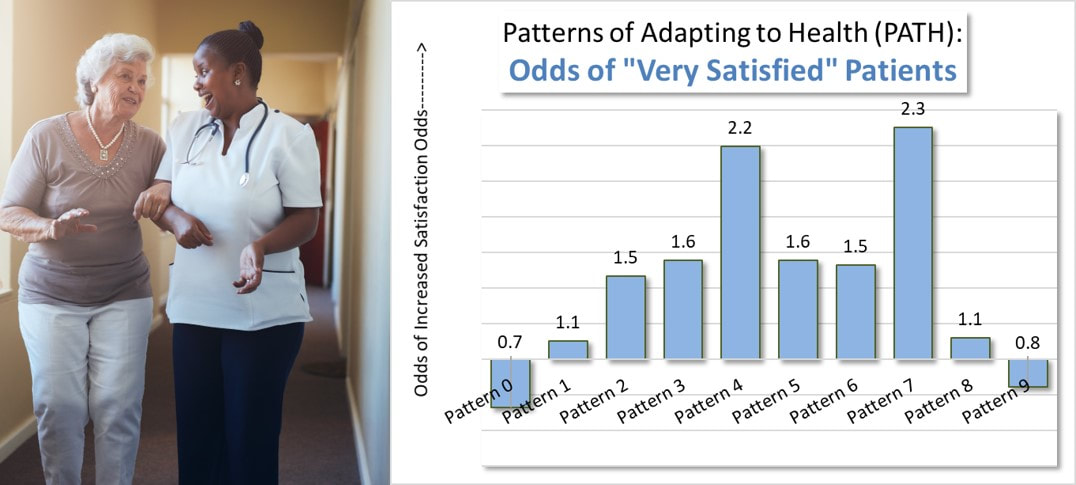|
Patient satisfaction contributes to clinical outcomes, patient retention, fewer medical malpractice claims, and improved reimbursement. Unfortunately, most guidance given for improving patient satisfaction focuses on improving service delivery and staff-patient interactions. The guidance is basically - get better.
Health Behavior Patterns and Satisfied Patients. Research relating the Patterns of Adapting to Health (PATH) to patient satisfaction ratings over 10,000 patients found that patients dominated by two patterns, Pattern 4 and Pattern 7, had over two times greater odds of giving a “very satisfied” rating compared to patients dominated by the other patterns. It seems that patient satisfaction is determined both by the behavior and culture of providers as well as individual patient dispositions at least partially shaped by their health behavior pattern. Attracting Satisfied Patients. This gives health care providers another option for raising their patient satisfaction levels: Attract a higher number of patients dominated by Pattern 4 and Pattern 7. This is actually a viable strategy. Research over the past 30-plus years has confirmed that all nine Patterns of Adapting to Health (PATH) exist in every market within the U.S. Those providers that attract a higher rate of those Pattern 4 and Pattern 7 patients within their service areas will see patient satisfaction benefits. Implications. Many market research studies have confirmed that patient preferences for local hospitals can differ based on patient’s dominant health behavior pattern. Some hospitals may be unknowingly benefiting from attracting and admitting patients dominated by either Pattern 4 and Pattern 7. Other hospitals, on the other hand, may be suffering, relative to patient satisfaction, because of unknowingly admitting fewer of these patients.
0 Comments
Leave a Reply. |
AuthorFrederick H. Navarro, PhD. Archives
March 2019
Categories |
|
Copyright © 2017 PATH Institute
|
Website by RyTech, LLC
|


 RSS Feed
RSS Feed

